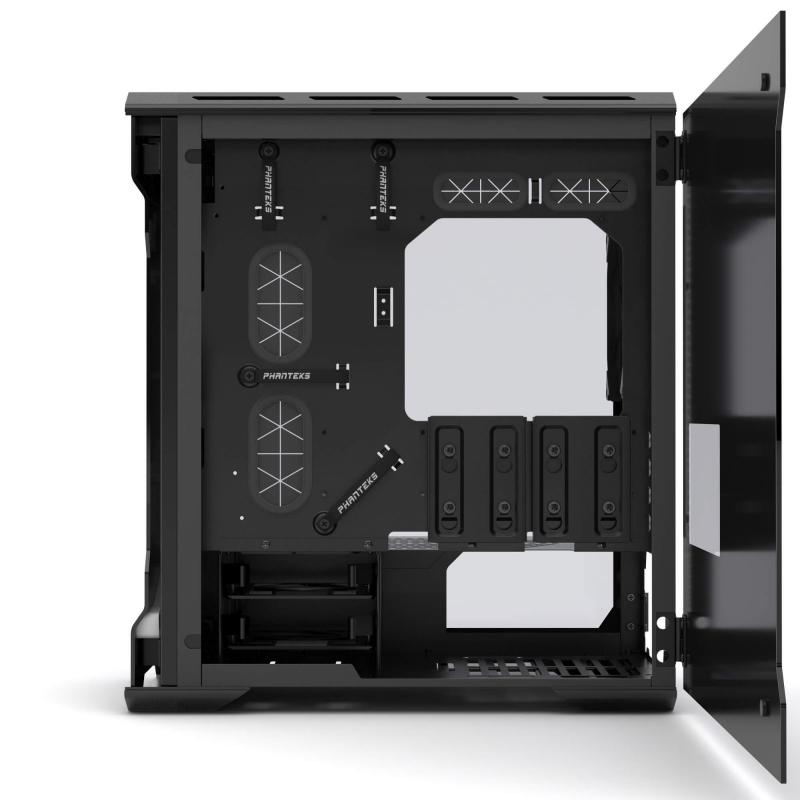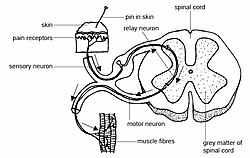Section 49 1 review neurons and nerve impulses Nellie Lake

Chapter 48 Neurons Synapses and Signaling D. A nerve running from the spinal cord to the stomach wall. 47. In a reflex arc, interneurons initiate nerve impulses in A. effectors. B. motor neurons. C. sensory neurons. D. sensory receptors. 48. In a reflex arc, the nerve impulse is initiated by A. the brain. B. an effector. C. a sensory neuron. D. a sensory receptor. 49. The sympathetic
UNIT 10 NERVOUS SYSTEM REVIEW Anurita Dhiman's LEC Website
Nervous System Answer Key Angelfire. Dendrites branch off the cell body and appear as thin extensions. A long “tail,” the axon, extends from the neuron body and can be wrapped in an insulating layer known as myelin. The dendrites receive signals from other nerve cells, while the axons send the signal on to the next neuron or target organ., long membrane-covered extensions of the cytoplasm that conduct nerve impulses. nerves. bundles of axons. membrane potential. difference in electrical charge across the cell membrane . resting potential. membrane potential of a neuron at rest. action potential. nerve impulse in which there is a reversal of the charges inside the neuron. synapse. junction at which a neuron meets another cell.
A nerve is an enclosed, cable-like bundle of nerve fibres called axons, in the peripheral nervous system.A nerve provides a common pathway for the electrochemical nerve impulses called action potentials that are transmitted along each of the axons to peripheral organs or, in the case of sensory nerves, from the periphery back to the central nervous system. Chapter 38 Section 2: Neurons and the Nerve Impulse Key Vocabulary Terms . Dendrite A cytoplasmic extension of a neuron that receives stimuli . Axon An elongated extension of a neuron that carries impulses away from the cell body . Nerve A collection of nerve fibers through which impulses travel between the central nervous system and other parts of the body . Membrane Potential The difference
26/12/2016 · What is a neuron action potential? Neurons use ions and electrical charges to relay signals from one neuron to the next, called an action potential. Find mor... Nerves are made of 1000‘s of neurons. There are three types of neurons: 1.Sensory Neurons carry a nerve impulse away from the receptors to the spinal cord or directly to the brain. 2.Motor Neurons carry a nerve impulse away from the brain to the muscles or glands. 3.Association Neurons carry nerve impulses across the spinal cord and to the
Free flashcards to help memorize facts about Completion 1. Other activities to help include hangman, crossword, word scramble, games, matching, quizes, and tests. 1 Biology 120 J. Greg Doheny Chapters 48 and 49 Neurons and Nervous Systems NEURONS: Neurons are special cells that coordinate much of the body’s actions. Most higher organisms have a central nervous system (including a brain) that processes information, and causes the body to react to situations with either simple or complicated behaviors.
Question 3: Name three involuntary actions controlled by medulla in the hind brain. Answer: Salivation, vomitting, blood pressure. Question 4: Explain the terms sensory nerve, motor nerve and mixed nerve. Answer: (i) A sensory nerve is one which sends nerve impulses from a receptor (sense organs) to the central nervous system. (ii) A motor nerve is one which carries the impulses from the long membrane-covered extensions of the cytoplasm that conduct nerve impulses. nerves. bundles of axons. membrane potential. difference in electrical charge across the cell membrane . resting potential. membrane potential of a neuron at rest. action potential. nerve impulse in which there is a reversal of the charges inside the neuron. synapse. junction at which a neuron meets another cell
how are nerve impulses are transmitted in a neuron Share with your friends. Share 0. The nerve impulse is the sum of mechanical, chemical and electrical disturbances created by a stimulus in a neuron. The conduction of the nerve impulse can be divided into two main phases – resting membrane potential and action membrane potential. Neurons are excitable cells. They may be stimulated by how are nerve impulses are transmitted in a neuron Share with your friends. Share 0. The nerve impulse is the sum of mechanical, chemical and electrical disturbances created by a stimulus in a neuron. The conduction of the nerve impulse can be divided into two main phases – resting membrane potential and action membrane potential. Neurons are excitable cells. They may be stimulated by
26/12/2016 · What is a neuron action potential? Neurons use ions and electrical charges to relay signals from one neuron to the next, called an action potential. Find mor... Chapter 38 Section 2: Neurons and the Nerve Impulse Key Vocabulary Terms . Dendrite A cytoplasmic extension of a neuron that receives stimuli . Axon An elongated extension of a neuron that carries impulses away from the cell body . Nerve A collection of nerve fibers through which impulses travel between the central nervous system and other parts of the body . Membrane Potential The difference
Neurons are the nerve cells that transmit impulses. Supporting cells are neuroglia. The three components of a neuron are a cell body or soma, one or more afferent processes called dendrites, and a single efferent process called an axon. The central nervous system consists of the brain and spinal cord. Cranial nerves, spinal nerves, and ganglia Neurons structure and nerve impulse 1. Neurons Structure and Conduction of a Nerve Impulse 2. Two coordinating systems which respond to environmental stimuli Nervous System & Endocrine (hormone) System Begin with Nervous System (data processing system) 3 interconnected functions input / integration / output
Section(3Workbook(Unit(7(ANSWERS)(( ( ( ( ( ( ( ( (((((Name:(__KEY_____(Nervous System: C11. Analyze the transmission of nerve impulses 1. Identify the 3 main parts of the neuron (dendrite, cell body, axon). 2. Complete the table. Name of Structure Function dendrite Receives signal and conduct the nerve impulse TOWARDS the cell body cell body Controls and maintains the cell because it contains 07/06/2010 · This video shows the changes of concentrations of molecules inside and outside of a nerve cell as an action potential is sent across the cell. This video is one of two 3D animations created by
rate of nerve impulse transmission. 3. The nervous system cells that provide a supporting role rather than a transmitting role are the Schwann cells, which produce the myelin sheath, and the glial cells, which provide nutritional and structural support for neurons. They facilitate the transmission of nerve impulses via neurons but do not The synapse is the gap between nerve cells, or between a nerve cell and its target, for example, a muscle or a gland, across which the impulse is transmitted by chemical compounds known as neurotransmitters. Neurons categorized as multipolar neurons have several dendrites and a single prominent axon. Bipolar neurons possess a single dendrite and axon with the cell body, while unipolar neurons
The synapse is the gap between nerve cells, or between a nerve cell and its target, for example, a muscle or a gland, across which the impulse is transmitted by chemical compounds known as neurotransmitters. Neurons categorized as multipolar neurons have several dendrites and a single prominent axon. Bipolar neurons possess a single dendrite and axon with the cell body, while unipolar neurons Researchers call the nerve impulse an “all-or-none” reaction since there are no gradations between threshold potential and fully activated potential. The neuron is either at rest with a polarized membrane, or it is conducting a nerve impulse at reverse polarization. The reverse polarity of active neurons is measured at about +30 mV.
Free flashcards to help memorize facts about Completion 1. Other activities to help include hangman, crossword, word scramble, games, matching, quizes, and tests. Action potentials in neurons are also known as "nerve impulses" or "spikes", and the temporal sequence of action potentials generated by a neuron is called its "spike train". A neuron that emits an action potential, or nerve impulse, is often said to "fire".
Section 11.1 The Role of the Nervous System Section 11.1

UNIT 10 NERVOUS SYSTEM REVIEW Anurita Dhiman's LEC Website. Start studying 49-1 neurons and nerve impulses. Learn vocabulary, terms, and more with flashcards, games, and other study tools., Main Difference – Myelinated vs Unmyelinated Nerve Fibers. Myelinated and unmyelinated nerve fibers are the two forms of nerve fibers that are found in the nervous system. The main difference between myelinated and unmyelinated nerve fibers is that myelinated nerve fibers contain a myelin insulation whereas unmyelinated nerve fibers do not contain a myeline insulation..
BIOLOGY 30 STUDY GUIDE Our Lady of the Snows
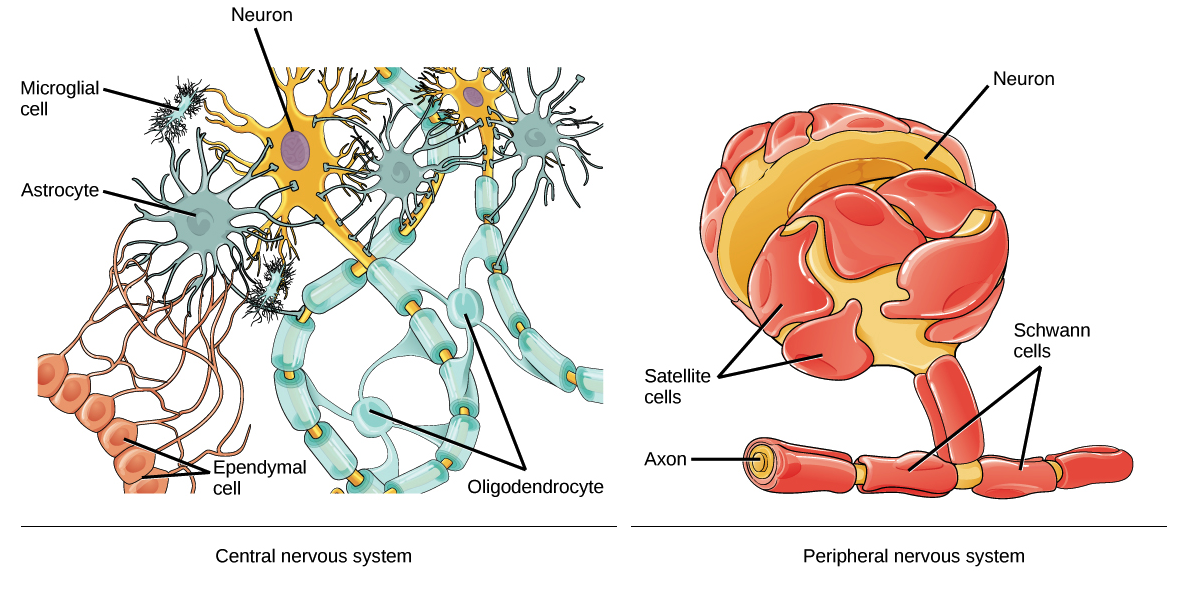
Section(3Workbook( Unit(7(ANSWERS. The ability of neurons to generate and conduct impulses make them special. The different types of ion channels present on the neural membranes help in the generation of impulses. Impulse Generation and Conduction. The neurons are said to be in resting state when they are not conducting any impulse. https://en.wikipedia.org/wiki/Talk%3ANeuron/Archive_1 The all-or-none law is a principle that states that the strength of a response of a nerve cell or muscle fiber is not dependent upon the strength of the stimulus. If a stimulus is above a certain threshold, a nerve or muscle fiber will fire. Essentially, there will either be a full ….
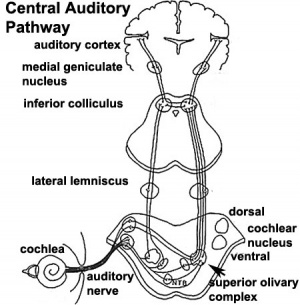
Section 49-3 VOCABULARY REVIEW 1. The nephron is the functional unit of the kidney where urine is produced. 2. The urethra is the tube through which urine passes from the urinary bladder out of the body. 3. The renal medulla is the inner two-thirds of the kidney. Independent Study 2 – Study Guide Answers 4. Excretion is the process of removing metabolic wastes from the body. Students may Biology I H: Chapter 33: Section 1 (Structure of the Nervous System) STUDY. PLAY. neuron. cell that carries nerve impulses throughout the body and is composed of a cell body, an axon, and dendrites . dendrite. neuron structure that recieves nerve impulses from other neurons and transmits them to the cell body. cell body. neuron structure that contains the nucleus and many organelles. axon
Nerve Description Vestibular nerve: 1. The 8th cranial nerve that carries impulses from the organs of balance and hearing to the brain. Optic nerve: 2. The 2nd cranial nerve that carries nervous impulses from the retina of the eye to the brain. Sciatic nerve: 3. The largest nerve in the body serving the muscles of the leg. Olfactory nerve: 4 Dendrites branch off the cell body and appear as thin extensions. A long “tail,” the axon, extends from the neuron body and can be wrapped in an insulating layer known as myelin. The dendrites receive signals from other nerve cells, while the axons send the signal on to the next neuron or target organ.
1 Biology 120 J. Greg Doheny Chapters 48 and 49 Neurons and Nervous Systems NEURONS: Neurons are special cells that coordinate much of the body’s actions. Most higher organisms have a central nervous system (including a brain) that processes information, and causes the body to react to situations with either simple or complicated behaviors. 14/04/2011 · For the Love of Physics - Walter Lewin - May 16, 2011 - Duration: 1:01:26. Lectures by Walter Lewin. They will make you ♥ Physics. Recommended for you
Transverse section of 12 nerve fascicles. SEM. Transverse section showing the coverings of a spinal nerve Blood vessels ENDONEURIUM around each axon Spinal nerve EPINEURIUM around entire nerve Fascicle Axon PERINEURIUM around each fascicle. A B. Transverse plane. Spinal Nerve . Figure 7.3. Nerves are bundles of individual neurons, held together Section(3Workbook(Unit(7(ANSWERS)(( ( ( ( ( ( ( ( (((((Name:(__KEY_____(Nervous System: C11. Analyze the transmission of nerve impulses 1. Identify the 3 main parts of the neuron (dendrite, cell body, axon). 2. Complete the table. Name of Structure Function dendrite Receives signal and conduct the nerve impulse TOWARDS the cell body cell body Controls and maintains the cell because it contains
26/12/2016 · What is a neuron action potential? Neurons use ions and electrical charges to relay signals from one neuron to the next, called an action potential. Find mor... Section 35–2 The Nervous System(pages 897–900) A nerve impulse begins when a neuron is stimulated by another neuron or by its environment. 9. Circle the letter of the choice that describes an action potential. a. Reversal of charges due to the flow of positive ions into a neuron b. Increase in negative ions in a neuron due to the flow of potassium out of the cell c. Change to a
The ability of neurons to generate and conduct impulses make them special. The different types of ion channels present on the neural membranes help in the generation of impulses. Impulse Generation and Conduction. The neurons are said to be in resting state when they are not conducting any impulse. how are nerve impulses are transmitted in a neuron Share with your friends. Share 0. The nerve impulse is the sum of mechanical, chemical and electrical disturbances created by a stimulus in a neuron. The conduction of the nerve impulse can be divided into two main phases – resting membrane potential and action membrane potential. Neurons are excitable cells. They may be stimulated by
rate of nerve impulse transmission. 3. The nervous system cells that provide a supporting role rather than a transmitting role are the Schwann cells, which produce the myelin sheath, and the glial cells, which provide nutritional and structural support for neurons. They facilitate the transmission of nerve impulses via neurons but do not Dendrites branch off the cell body and appear as thin extensions. A long “tail,” the axon, extends from the neuron body and can be wrapped in an insulating layer known as myelin. The dendrites receive signals from other nerve cells, while the axons send the signal on to the next neuron or target organ.
Free flashcards to help memorize facts about Completion 1. Other activities to help include hangman, crossword, word scramble, games, matching, quizes, and tests. 14/04/2011 · For the Love of Physics - Walter Lewin - May 16, 2011 - Duration: 1:01:26. Lectures by Walter Lewin. They will make you ♥ Physics. Recommended for you
14/04/2011 · For the Love of Physics - Walter Lewin - May 16, 2011 - Duration: 1:01:26. Lectures by Walter Lewin. They will make you ♥ Physics. Recommended for you Section 35–2 The Nervous System(pages 897–900) A nerve impulse begins when a neuron is stimulated by another neuron or by its environment. 9. Circle the letter of the choice that describes an action potential. a. Reversal of charges due to the flow of positive ions into a neuron b. Increase in negative ions in a neuron due to the flow of potassium out of the cell c. Change to a
1. Describe how a neurotransmitter can affect the activity of a postsynaptic neuron. _____ 2. Describe the relative concentrations of sodium and potassium ions inside and outside a neuron at resting potential. _____ _____ 3. Explain why action potentials move through axons in only one direction: away from Dendrites branch off the cell body and appear as thin extensions. A long “tail,” the axon, extends from the neuron body and can be wrapped in an insulating layer known as myelin. The dendrites receive signals from other nerve cells, while the axons send the signal on to the next neuron or target organ.

06/02/2017 · In this video Paul Andersen explains how the synapse allows information to travel from one axon to the next. He starts by differentiating between electrical and chemical synapses. He then details The nerve cell. The watershed of all studies of the nervous system was an observation made in 1889 by Spanish scientist Santiago Ramón y Cajal, who reported that the nervous system is composed of individual units that are structurally independent of one another and whose internal contents do not come into direct contact.According to his hypothesis, now known as the neuron theory, each nerve
Nerve Impulse YouTube
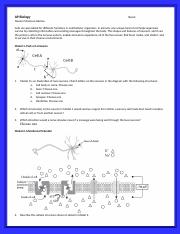
Nervous system Action potential Britannica. A nerve conveys information in the form of electrochemical impulses (known as nerve impulses or action potentials) carried by the individual neurons that make up the nerve. These impulses are extremely fast, with some myelinated neurons conducting at speeds up to 120 m/s. The impulses travel from one neuron to another by crossing a synapse, and, The all-or-none law is a principle that states that the strength of a response of a nerve cell or muscle fiber is not dependent upon the strength of the stimulus. If a stimulus is above a certain threshold, a nerve or muscle fiber will fire. Essentially, there will either be a full ….
Neurons structure and nerve impulse SlideShare
Holt Biology Chapter 41 Resource File Nervous System. The ability of neurons to generate and conduct impulses make them special. The different types of ion channels present on the neural membranes help in the generation of impulses. Impulse Generation and Conduction. The neurons are said to be in resting state when they are not conducting any impulse., 1. Describe how a neurotransmitter can affect the activity of a postsynaptic neuron. _____ 2. Describe the relative concentrations of sodium and potassium ions inside and outside a neuron at resting potential. _____ _____ 3. Explain why action potentials move through axons in only one direction: away from.
06/02/2017 · In this video Paul Andersen explains how the synapse allows information to travel from one axon to the next. He starts by differentiating between electrical and chemical synapses. He then details Section(3Workbook(Unit(7(ANSWERS)(( ( ( ( ( ( ( ( (((((Name:(__KEY_____(Nervous System: C11. Analyze the transmission of nerve impulses 1. Identify the 3 main parts of the neuron (dendrite, cell body, axon). 2. Complete the table. Name of Structure Function dendrite Receives signal and conduct the nerve impulse TOWARDS the cell body cell body Controls and maintains the cell because it contains
Copyri 2010 Pearson Education, Inc. - 1 - Name _____ Period _____ Chapter 48: Neurons, Synapses, and Signaling . Concept 48.1 Neuron organization and structure reflect function in information transfer . 1. What is a neuron? 2. Neurons can be placed into three groups, based on their location and function. Type of Neuron . Function D. A nerve running from the spinal cord to the stomach wall. 47. In a reflex arc, interneurons initiate nerve impulses in A. effectors. B. motor neurons. C. sensory neurons. D. sensory receptors. 48. In a reflex arc, the nerve impulse is initiated by A. the brain. B. an effector. C. a sensory neuron. D. a sensory receptor. 49. The sympathetic
Copyri 2010 Pearson Education, Inc. - 1 - Name _____ Period _____ Chapter 48: Neurons, Synapses, and Signaling . Concept 48.1 Neuron organization and structure reflect function in information transfer . 1. What is a neuron? 2. Neurons can be placed into three groups, based on their location and function. Type of Neuron . Function The all-or-none law is a principle that states that the strength of a response of a nerve cell or muscle fiber is not dependent upon the strength of the stimulus. If a stimulus is above a certain threshold, a nerve or muscle fiber will fire. Essentially, there will either be a full …
The ability of neurons to generate and conduct impulses make them special. The different types of ion channels present on the neural membranes help in the generation of impulses. Impulse Generation and Conduction. The neurons are said to be in resting state when they are not conducting any impulse. Neurons are the nerve cells that transmit impulses. Supporting cells are neuroglia. The three components of a neuron are a cell body or soma, one or more afferent processes called dendrites, and a single efferent process called an axon. The central nervous system consists of the brain and spinal cord. Cranial nerves, spinal nerves, and ganglia
Start studying Chapter 41 Section 1 Neurons and Nerve impulses. Learn vocabulary, terms, and more with flashcards, games, and other study tools. Nerve Description Vestibular nerve: 1. The 8th cranial nerve that carries impulses from the organs of balance and hearing to the brain. Optic nerve: 2. The 2nd cranial nerve that carries nervous impulses from the retina of the eye to the brain. Sciatic nerve: 3. The largest nerve in the body serving the muscles of the leg. Olfactory nerve: 4
Researchers call the nerve impulse an “all-or-none” reaction since there are no gradations between threshold potential and fully activated potential. The neuron is either at rest with a polarized membrane, or it is conducting a nerve impulse at reverse polarization. The reverse polarity of active neurons is measured at about +30 mV. Basic Cells of the Nervous System Neuron • Basic functional cell of nervous system • Transmits impulses (up to 250 mph) Parts of a Neuron • The nerve impulse causes a movement of ions across the cell membrane of the nerve cell. Synapse o Synapse - small gap or space between the axon of one neuron and the dendrite of another - the neurons do not actually tough at the synapse o It is
Free flashcards to help memorize facts about Completion 1. Other activities to help include hangman, crossword, word scramble, games, matching, quizes, and tests. The ability of neurons to generate and conduct impulses make them special. The different types of ion channels present on the neural membranes help in the generation of impulses. Impulse Generation and Conduction. The neurons are said to be in resting state when they are not conducting any impulse.
06/02/2017 · In this video Paul Andersen explains how the synapse allows information to travel from one axon to the next. He starts by differentiating between electrical and chemical synapses. He then details Nervous System Answer Key. Neurons. 1.Part Function. CELLBODY Receive messages from dendrites and transmit them through axons. DENDRITE Receives an impulse f,rom an axon. AXON Transmits an impulse away from the cell body. NODE OF RANVER Jumping points for the nerve impulse along an axon membrane. Part of the axon or dendrite not
Copyri 2010 Pearson Education, Inc. - 1 - Name _____ Period _____ Chapter 48: Neurons, Synapses, and Signaling . Concept 48.1 Neuron organization and structure reflect function in information transfer . 1. What is a neuron? 2. Neurons can be placed into three groups, based on their location and function. Type of Neuron . Function 1. Describe how a neurotransmitter can affect the activity of a postsynaptic neuron. _____ 2. Describe the relative concentrations of sodium and potassium ions inside and outside a neuron at resting potential. _____ _____ 3. Explain why action potentials move through axons in only one direction: away from
1. Describe how a neurotransmitter can affect the activity of a postsynaptic neuron. _____ 2. Describe the relative concentrations of sodium and potassium ions inside and outside a neuron at resting potential. _____ _____ 3. Explain why action potentials move through axons in only one direction: away from Start studying Chapter 41 Section 1 Neurons and Nerve impulses. Learn vocabulary, terms, and more with flashcards, games, and other study tools.
Neurons structure and nerve impulse 1. Neurons Structure and Conduction of a Nerve Impulse 2. Two coordinating systems which respond to environmental stimuli Nervous System & Endocrine (hormone) System Begin with Nervous System (data processing system) 3 interconnected functions input / integration / output Section 35–2 The Nervous System(pages 897–900) A nerve impulse begins when a neuron is stimulated by another neuron or by its environment. 9. Circle the letter of the choice that describes an action potential. a. Reversal of charges due to the flow of positive ions into a neuron b. Increase in negative ions in a neuron due to the flow of potassium out of the cell c. Change to a
Nervous system Action potential Britannica
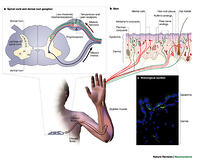
The Nervous System Part 1 Crash Course A&P #8 YouTube. how are nerve impulses are transmitted in a neuron Share with your friends. Share 0. The nerve impulse is the sum of mechanical, chemical and electrical disturbances created by a stimulus in a neuron. The conduction of the nerve impulse can be divided into two main phases – resting membrane potential and action membrane potential. Neurons are excitable cells. They may be stimulated by, 14/04/2011 · For the Love of Physics - Walter Lewin - May 16, 2011 - Duration: 1:01:26. Lectures by Walter Lewin. They will make you ♥ Physics. Recommended for you.
Nerve Impulse YouTube
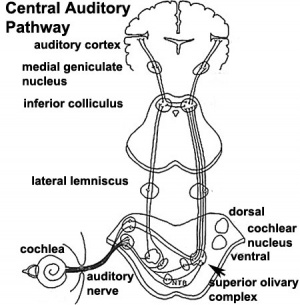
Neuron action potential physiology - YouTube. 26/12/2016 · What is a neuron action potential? Neurons use ions and electrical charges to relay signals from one neuron to the next, called an action potential. Find mor... https://en.wikipedia.org/wiki/Type_of_motor_fibers Researchers call the nerve impulse an “all-or-none” reaction since there are no gradations between threshold potential and fully activated potential. The neuron is either at rest with a polarized membrane, or it is conducting a nerve impulse at reverse polarization. The reverse polarity of active neurons is measured at about +30 mV..

A nerve is an enclosed, cable-like bundle of nerve fibres called axons, in the peripheral nervous system.A nerve provides a common pathway for the electrochemical nerve impulses called action potentials that are transmitted along each of the axons to peripheral organs or, in the case of sensory nerves, from the periphery back to the central nervous system. Neurons are the nerve cells that transmit impulses. Supporting cells are neuroglia. The three components of a neuron are a cell body or soma, one or more afferent processes called dendrites, and a single efferent process called an axon. The central nervous system consists of the brain and spinal cord. Cranial nerves, spinal nerves, and ganglia
14/04/2011 · For the Love of Physics - Walter Lewin - May 16, 2011 - Duration: 1:01:26. Lectures by Walter Lewin. They will make you ♥ Physics. Recommended for you Chapter 38 Section 2: Neurons and the Nerve Impulse Key Vocabulary Terms . Dendrite A cytoplasmic extension of a neuron that receives stimuli . Axon An elongated extension of a neuron that carries impulses away from the cell body . Nerve A collection of nerve fibers through which impulses travel between the central nervous system and other parts of the body . Membrane Potential The difference
Copyri 2010 Pearson Education, Inc. - 1 - Name _____ Period _____ Chapter 48: Neurons, Synapses, and Signaling . Concept 48.1 Neuron organization and structure reflect function in information transfer . 1. What is a neuron? 2. Neurons can be placed into three groups, based on their location and function. Type of Neuron . Function Biology I H: Chapter 33: Section 1 (Structure of the Nervous System) STUDY. PLAY. neuron. cell that carries nerve impulses throughout the body and is composed of a cell body, an axon, and dendrites . dendrite. neuron structure that recieves nerve impulses from other neurons and transmits them to the cell body. cell body. neuron structure that contains the nucleus and many organelles. axon
rate of nerve impulse transmission. 3. The nervous system cells that provide a supporting role rather than a transmitting role are the Schwann cells, which produce the myelin sheath, and the glial cells, which provide nutritional and structural support for neurons. They facilitate the transmission of nerve impulses via neurons but do not The nerve cell. The watershed of all studies of the nervous system was an observation made in 1889 by Spanish scientist Santiago Ramón y Cajal, who reported that the nervous system is composed of individual units that are structurally independent of one another and whose internal contents do not come into direct contact.According to his hypothesis, now known as the neuron theory, each nerve
long membrane-covered extensions of the cytoplasm that conduct nerve impulses. nerves. bundles of axons. membrane potential. difference in electrical charge across the cell membrane . resting potential. membrane potential of a neuron at rest. action potential. nerve impulse in which there is a reversal of the charges inside the neuron. synapse. junction at which a neuron meets another cell Section 1 Neurons And Nerve 49 Impulses Chapter Neuron... Chapter 49 Impulses Section 1 Neurons and Nerve and is made up of the brain and the spinal cord. – The dorsal roots carry signals into the central nervous system from sensory receptors.
long membrane-covered extensions of the cytoplasm that conduct nerve impulses. nerves. bundles of axons. membrane potential. difference in electrical charge across the cell membrane . resting potential. membrane potential of a neuron at rest. action potential. nerve impulse in which there is a reversal of the charges inside the neuron. synapse. junction at which a neuron meets another cell Free flashcards to help memorize facts about Completion 1. Other activities to help include hangman, crossword, word scramble, games, matching, quizes, and tests.
Transverse section of 12 nerve fascicles. SEM. Transverse section showing the coverings of a spinal nerve Blood vessels ENDONEURIUM around each axon Spinal nerve EPINEURIUM around entire nerve Fascicle Axon PERINEURIUM around each fascicle. A B. Transverse plane. Spinal Nerve . Figure 7.3. Nerves are bundles of individual neurons, held together Nerve Description Vestibular nerve: 1. The 8th cranial nerve that carries impulses from the organs of balance and hearing to the brain. Optic nerve: 2. The 2nd cranial nerve that carries nervous impulses from the retina of the eye to the brain. Sciatic nerve: 3. The largest nerve in the body serving the muscles of the leg. Olfactory nerve: 4
Basic Cells of the Nervous System Neuron • Basic functional cell of nervous system • Transmits impulses (up to 250 mph) Parts of a Neuron • The nerve impulse causes a movement of ions across the cell membrane of the nerve cell. Synapse o Synapse - small gap or space between the axon of one neuron and the dendrite of another - the neurons do not actually tough at the synapse o It is Chapter 38 Section 2: Neurons and the Nerve Impulse Key Vocabulary Terms . Dendrite A cytoplasmic extension of a neuron that receives stimuli . Axon An elongated extension of a neuron that carries impulses away from the cell body . Nerve A collection of nerve fibers through which impulses travel between the central nervous system and other parts of the body . Membrane Potential The difference
1 Biology 120 J. Greg Doheny Chapters 48 and 49 Neurons and Nervous Systems NEURONS: Neurons are special cells that coordinate much of the body’s actions. Most higher organisms have a central nervous system (including a brain) that processes information, and causes the body to react to situations with either simple or complicated behaviors. A nerve is an enclosed, cable-like bundle of nerve fibres called axons, in the peripheral nervous system.A nerve provides a common pathway for the electrochemical nerve impulses called action potentials that are transmitted along each of the axons to peripheral organs or, in the case of sensory nerves, from the periphery back to the central nervous system.
07/06/2010 · This video shows the changes of concentrations of molecules inside and outside of a nerve cell as an action potential is sent across the cell. This video is one of two 3D animations created by 14/04/2011 · For the Love of Physics - Walter Lewin - May 16, 2011 - Duration: 1:01:26. Lectures by Walter Lewin. They will make you ♥ Physics. Recommended for you
Chapter 33-1 The Nervous. System NWRC BIO 30 Neurons Watch Video Dendrites – receive signals and conduct impulses. Cell body – contains Axon – carries the nerve nucleus and other cell impulse from the cell body to organelles other neurons and muscles The cell body • Contains the cell’s Nucleus Basic Cells of the Nervous System Neuron • Basic functional cell of nervous system • Transmits impulses (up to 250 mph) Parts of a Neuron • The nerve impulse causes a movement of ions across the cell membrane of the nerve cell. Synapse o Synapse - small gap or space between the axon of one neuron and the dendrite of another - the neurons do not actually tough at the synapse o It is
